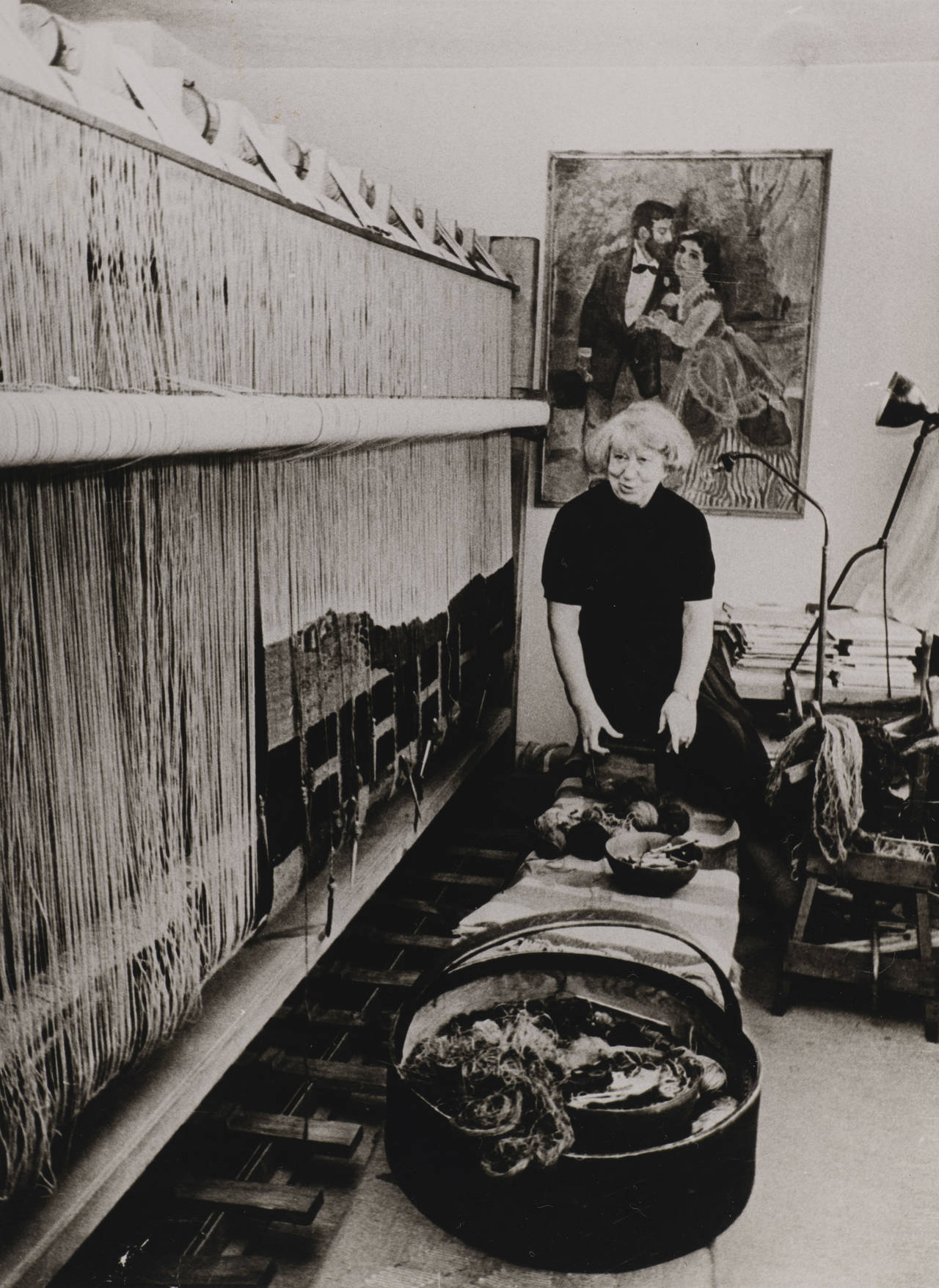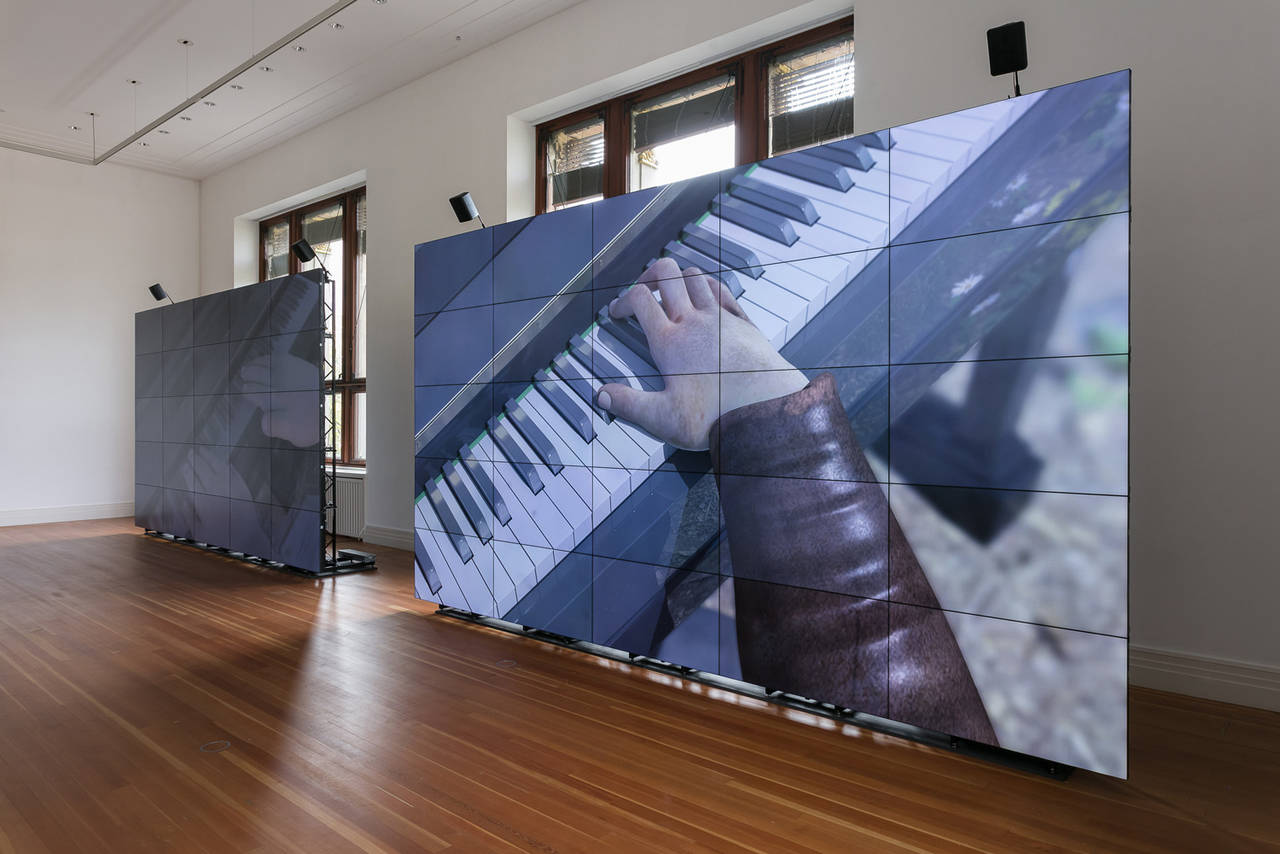Nodding and waving at someone are typically movements people perform without thinking too hard about it. But what happens if these gestures are performed to absurdity and decontextualized in a digital art performance?
Wake up. Blink eyes open. Get up and out of bed. Stretch. Brush teeth. Brush hair. Get dressed. Fix breakfast. Pull the curtains. Open the door. Close the door. Lock the door. Every morning every one of us begins a routine with simple movements and motions, give or take a few. And I left out one morning movement that is increasingly common — reach for phone. Check email. Check calendar and news headlines and tweets and various social media updates. Swipe. Swipe. Swipe. Swipe. Put the phone down. Get back to the morning routine.
Conceptually, swiping a phone might feel like a gesture of discovery and entrance — akin to the act of opening a door in physical space. But to the body, the movement is minuscule and unpronounced. Open a door and your entire arm is engaged. But to swipe, only a careless fingertip is put to use. Swiping a screen requires not much more from a person than nodding one’s head or blinking eyes.
If clicking a mouse required jumping hurdles
It is no surprise that the gestures we employ to move digital objects on a screen play out as compressed body movements. Even in the narrowest of hallways, the tightest corner offices, the middle seat in a row in an aircraft with the least forgiving allotment of legroom — anywhere —typically, you can still manage to type or swipe or click on a smart phone or a laptop. Of course this is by design. If clicking a mouse required pirouettes, jumping hurdles, or other exaggerated gestures expressed through vast spaces, nothing would ever get done. Moving takes time. And time is money. So our gestures with these devices are slight and performed quickly.

There are a wide variety of these pixel-pushing motions. What used to be as simple as pushing a mouse on a pad or typing on a keyboard, now includes a range of movements like pinching and spreading fingers to reduce size of an object or enlarge. Swipe, pinch, or push in any direction and still, only the tiniest muscles ever strain or expand. These motions are close to the body and often hard to see. These gestures are unworthy of the Vitruvian Man. People might find their bodies recede, while they click and swipe. Out of habit, shoulders may slouch, necks hunch over and round. It is as if we try to shrink ourselves to fit inside the screens we focus upon.
Technology that alienates users from their bodies
What’s immediately exciting about "How We Act Together,” a new project by Lauren McCarthy and Kyle McDonald, currently on view at the Schirn Kunsthalle in Frankfurt, is that the artists have reclaimed gestures as a social behavior, and they use technology to do this. The same technology that alienates users from their bodies is, in this piece, the catalyst for social engagement.
"How We Act Together” calls for the participation of people both in the exhibition space and remotely. Participants are invited to partake in one of four gestures, sustaining the activity until tiring of it. Participants complete the gestures — nodding, screaming, waving and starring — until boredom or physical fatigue sets in. They watch participants before them complete the gesture and meanwhile a video is recording them. If the participant sustains the activity longer than the others in the video, their recording is added to the end. So the video becomes an accumulative performance, telling the story of everyone who engaged with the project long enough to be part of the archive of this piece. Think of this project as a relay race that cuts through time and space. Only instead of running laps, people sustain common everyday movements. It is competitive, but also a conversation. Bodies are, after all, tools for the simplest forms of communication.
Gestures we associate with looking at one another
These gestures are performed to absurdity and decontextualized. Nodding and waving at someone are typically rote actions. These are movements people perform without thinking too hard about it. But "How We Act Together” calls for its participants to create a memory around the gesture. The participant can pin it to the next time he or she is nodding or blinking, and perhaps fill that gesture again with a deeper consciousness and awareness. Notice that the gestures McCarthy and McDonald selected have nothing to do with moving a cursor around on a screen or opening up an app. These aren’t digital gestures (albeit blinking might be, some day, soon enough.) These are the gestures we associate with looking at one another in physical space.

A number of politicians and social scientists in recent years have offered specious arguments about how the internet forces people into social isolation and echo chambers; arguments, to which, there are always countless counterexamples in anecdotes about friendships, communities, and enlightenment found online. A less controversial case is the finding that the devices we use to access the internet encroach upon a user’s body. Years of use sometimes manifest as claw-like hands, curved to hold a smartphone, even in its absence, repetitive stress injury and carpal tunnel syndrome further breakdown fingers and wrists. But it seems no one ever experienced a similar strain from too much nodding or blinking. When a person blinks or nods or screams or waves in their daily life, it is usually performed just once. But swiping a phone once is almost never enough. The body at odds with technology. It might be obvious to say, and yet, it is important to consider, that the body’s absorbs all these tiny swipes and as it collects the sum as wrist pain and swollen knuckles. And this impedes on further communication. Maybe, in a roundabout way, there is something to the idea that internet use can lead to social isolation: it is possible, in the sense that a broken body is less capable of texting, and therefore less capable of communicating.
If we blinked to open browser tabs would RSI for the eyelids become a typical diagnosis? If touch screens were operated by waving how might our postures shift? Would one shoulder become more dominant than the other? “How We Act Together” encourages its audience and participants to prize these gestures because they are usually momentary and scarce.


“People who weave view the world differently”
Like the virtual world, weaving resembles a binary system, says Prof. Birgit Schneider. A conversation about textiles as precursors of digital codes...

When the crowd determines the individual
Crowd movements can easily be simulated by algorithms. How this influences our real life, is shown in the film “Transformation Scenario” at the coming...

How Virtual Reality conquers the art world
Ever danced with a wolf? Artist duo Djurberg & Berg make it possible with their first virtual reality work. They are part of a young generation of...

When computer games become reality
A tropical landscape turns out to be the distorted world of a human avatar. In Aleksandar Radan’s film “This water gives back no images” nothing is...

Nathalie Djurberg & Hans Berg
The encounter with the films of Nathalie Djurberg and Hans Berg has something of a seduction — they immediately attract the viewer into colorful...

In the vicious circle of sadness
As part of the “Immersion” series, British artist Ed Atkins is presenting an exhibition at Martin-Gropius-Bau that addresses our ubiquitous escapism...